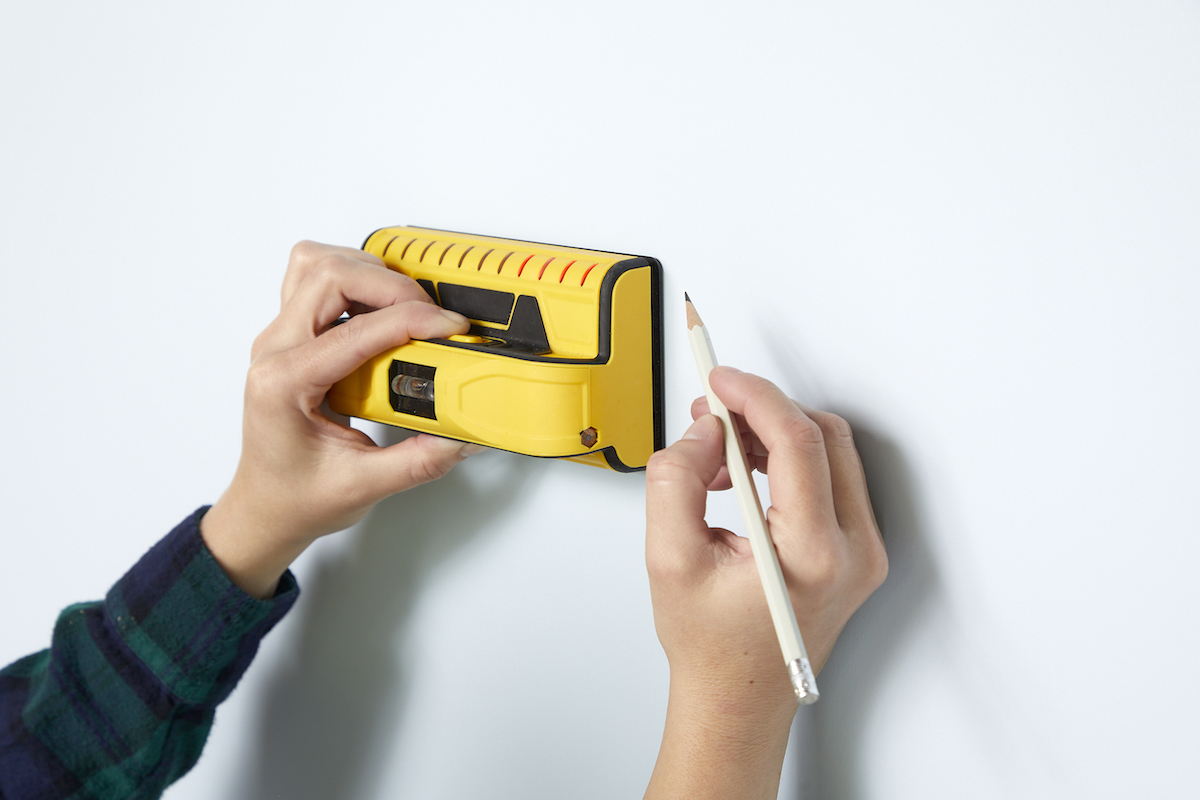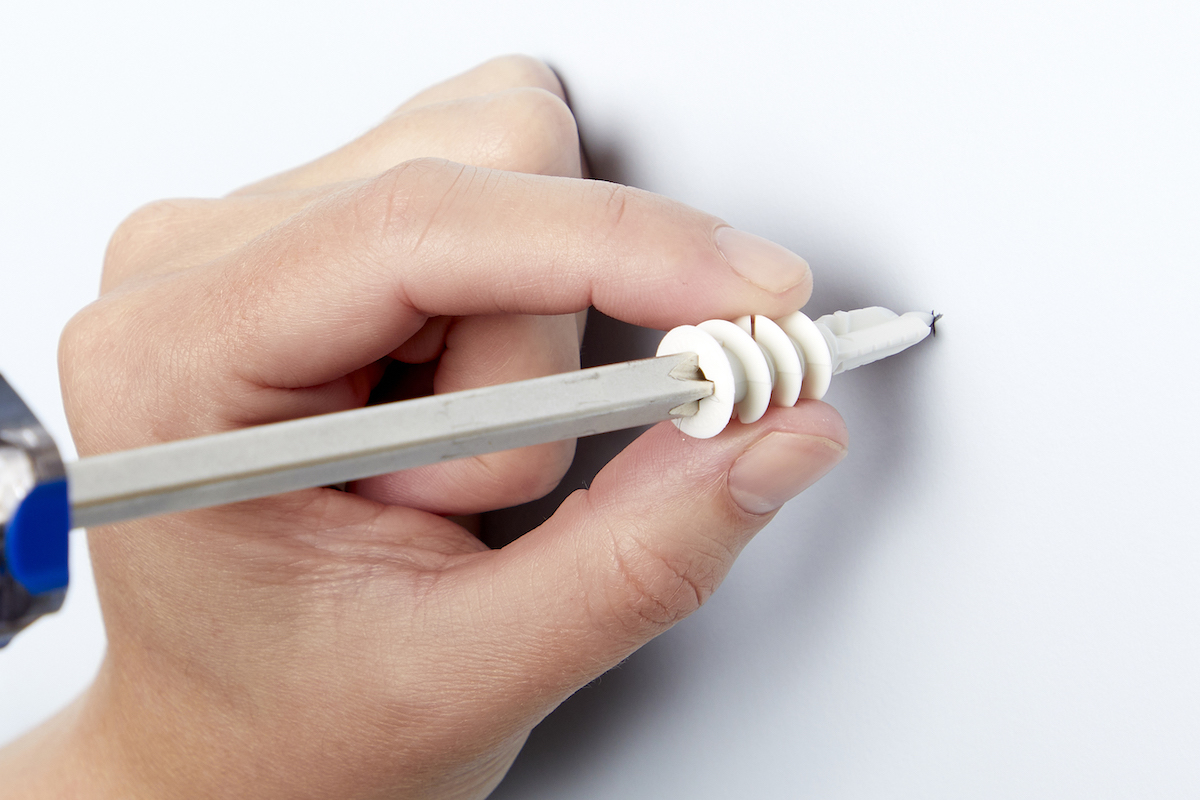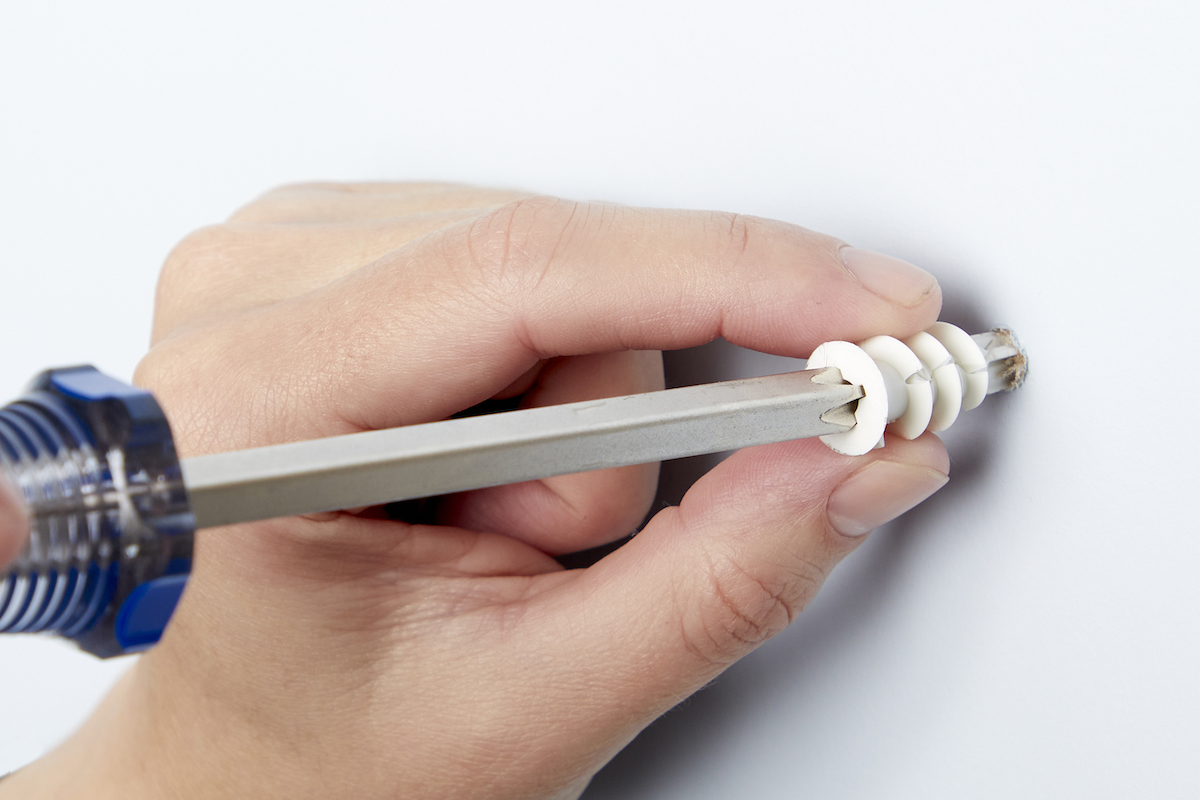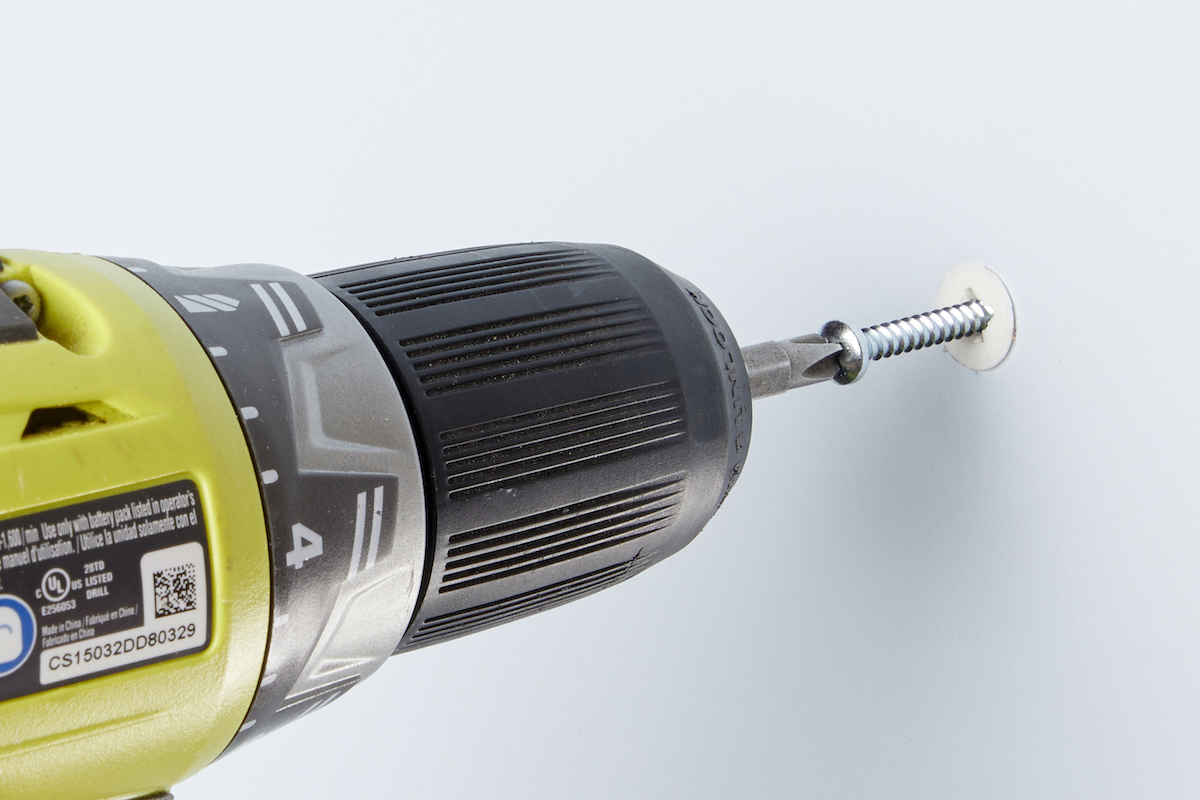We may earn revenue from the products available on this page and participate in affiliate programs. Learn More ›
So, you want to hang something heavier than an average photo frame from your drywall: Whether you’re putting in a screw to support a rack laden with damp bath towels, a paper towel holder that gets regular use, or even a heavy mirror, you’ll certainly want it to stay there and not suddenly tear through the drywall under the weight of whatever it supports.
RELATED: Dos and Don’ts of Repairing Drywall
Unfortunately, that’s the way the drywall crumbles, if it doesn’t have proper reinforcement. The good news is that there are a few options for securing a rack (or what have you) to the wall, and one of the most popular ways involves the drywall anchor. These pre-screw installments are designed to grip the brittle drywall and help hold your fastener in place. Follow this guide for how to use drywall anchor screws properly in your next project, and you can rest easy knowing that your hard work will hold up.
Tools & Materials
Bobvila.com may earn a commission from purchases made through these links.
Project Overview
Working Time: 5 to 10 minutes
Total Time: 5 to 10 minutes
Skill Level: Beginner
Estimated Cost: $10 to $15
Before You Begin

Before attempting to install a drywall anchor, first determine if you even need to use one. Drywall anchors are designed to add strength to hollow drywall. If you’re lucky enough to find a wall stud where you’re planning to drive in a screw for that framed painting or bathroom shelf, an anchor isn’t necessary. A single fastener driven into a stud can hold 100 pounds or more, depending on the size of the screw or lag bolt you’re using. Use a stud finder or some other method to find the wall studs behind the drywall before you begin.
Step 1: Select the right type of drywall anchor for your project.

There are different types of drywall anchors, so make sure that your drywall anchor is rated for the amount of weight you’ll be putting on this fixture, and appropriate for wherever it’s installed (some are meant for walls, for example, and others for the ceiling).
In these instructions for how to use drywall anchors, we’re working with a threaded or self-drilling drywall anchor that holds up to 50 pounds and can be installed without a drill. These drywall anchors for heavy items go into walls without any pre-drilling and come in strengths ranging from 25 to 75 pounds, which is enough for most light-duty to moderate-duty projects.
Other than threaded anchors, the most common type of drywall anchor is the expansion anchor. Like threaded anchors, these can be used for hanging artwork, floating shelves, or bathroom hooks. Since this anchor is shaped like a plastic, hollow plug, it requires you to drill a pilot hole that matches the diameter of the anchor before you insert the anchor. The anchor should fit snugly inside the hole. When the screw is driven into the anchor, the anchor’s tip expands, locking it into place inside the drywall. Since a plug drywall anchor isn’t as strong as a threaded drywall anchor, it’s best for lighter-duty jobs of up to 25 pounds.
Step 2: Use moderate pressure to twist a self-drilling wall anchor into drywall.

You only need to apply moderate pressure with a screwdriver to install threaded drywall anchors, as their points will self-drill into the wall. When the wide threads start to grab on, make sure you keep applying pressure so the anchor doesn’t simply spin in the hole and dig out the drywall. If you’re having a hard time getting the anchor started, drill a pilot hole using a drill bit that’s narrower in diameter than the anchor.
You can also use a cordless drill with a screwdriver bit to drive in the anchor, but you’ll need to do so carefully to avoid stripping out the drywall with the anchor’s threads. Drive the anchor in using a slow, constant speed and be sure not to overtighten it.
Step 3: Turn the drywall anchor in until the lip is flush with the wall.

Whether using a manual screwdriver or cordless driver, be careful not to tighten the anchor so much that it actually becomes inset into the wall.
For plug anchors, push the anchor into the pilot hole until the lip is up against the drywall. You may need to tap the anchor with a hammer to drive it completely into the hole. The anchor should fit snugly inside the pilot hole. Resist the urge to force the plug into a hole that’s too small, which could damage the anchor or drywall. If the hole is too small, remove the plug and use a slightly large drill bit to widen the hole’s diameter.
Step 4: Attach your rack or shelf to the wall by screwing into the drywall anchor.

Once again, make sure you first put the screw through the hole of the thing you’re attaching to the wall. (In this example, we’re attaching a bracket to the wall to support a small shelf. Note how the screw passes through the hole in the bracket before twisting into the drywall anchor.)
Here’s what it looks like behind your wall. The wide threads of a threaded drywall anchor and the serrations on the plug-style anchor help it to grab onto the surrounding drywall. When the screw goes in, it pops the barbs out for added power. Redecorating or moving out? When you have no use for them anymore, learn how to remove drywall anchors.
Final Thoughts

By using the methods above, you can dramatically increase the load-bearing weight of drywall from a pound or two up to 75 pounds. Since drywall anchors vary in size and load ratings, it’s crucial to take careful note of weight when working with these tools. While large threaded anchors may be able to hold up to 75 pounds, smaller plug-style anchors may only support up to 10 pounds. By paying careful attention to an anchor’s load limitations and the total weight of the item (along with the weight of any items it will hold) will ensure the anchor remains securely attached to the drywall.
Additional reporting from Pete Fazio.
FAQs
Whether you need to predrill a hole for a drywall anchor depends on the type of anchor. Threaded drywall anchors do not need a pilot hole to install. If the anchor does not have a threaded tip, you’ll need to drill a pilot hole. Use a drill bit that’s the same diameter as the body of the anchor.
Your drywall anchor is spinning for one of two reasons. If the anchor required you to drill a pilot hole, you drilled too large of a hole. If you’re using a threaded drywall anchor, you have overtightened the anchor, causing it to strip out the surrounding drywall. You’ll need to drill a new hole in a different location on the wall or use a larger anchor and screw.
That depends on the type of drywall anchor. If you’re using a threaded anchor, you must use a screwdriver or cordless driver to install the anchor into drywall. Attempting to hammer it in will damage the anchor and likely the wall. You can use a hammer to tap an unthreaded drywall anchor into a pilot hole as long as the pilot hole isn’t too small. The anchor should go into the hole with light taps and fit snugly.
A drywall anchor’s weight capacity depends on the type of anchor. Plastic threaded drywall anchors can support up to 75 pounds.


